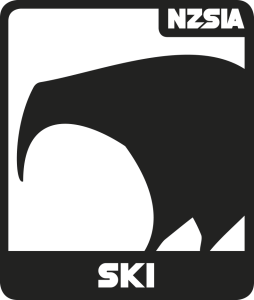Developing Grip Wedge-To-Parallel
 What, Why, How
What, Why, How
What
Developing stronger, more positive grip and edging through the bottom half of the turn. As the skis are parallel for a longer duration there can be an emphasis on developing grip which will set students up for success.
Why
Will give skiers a much stronger feeling of grip and control. For skiers to develop their skiing onto a parallel turn a higher edge angle is needed in the bottom half of the turn to create a platform for more precise balance.
How
Develop the lateral movement of the legs to roll the skis onto an increased edge angle.

 Technical Knowhow
Technical Knowhow
What’s New
Precise and accurate movement of the legs will create edging and give a greater feeling of grip and control.
Performance Tips
Body: Focus on inclining the legs further inside the turn underneath a stable upper body, creating more angulation in the middle of the turn.
Turn phases: During the control phase of the turn, the degree of edging on both skis will increase.
Skills
Situational Understanding
- Travel at a speed that allows for parallel to be achieved before the fall line
- Use easy blue terrain
- Develop awareness of why skis need to be edged
- If using wider skis, understand edging will become harder, and steering will become easier
Active Stance & Balance
- Use flexion of the legs during the bottom half of the turn to aid lateral movement and edging
Outside Ski Balance
- Higher speeds and greater edge angle will create more force acting on the skier
- Maintain a stable upper body while inclining the legs further inside the turn, helping to manage angulation
Edging
- Ski design will be aiding the skier to follow a smooth, round turn shape
- Use lateral and rotational movement of the femurs to incline the legs inside the turn, developing more edge through the control phase of the turn
- Establish good grip on the outside ski before moving to parallel
Steering
- Increase the intensity of rotation to maintain a steered turn shape
- Create a small wedge at the start of the turn
- For the majority of the turn skis are parallel
Ski Snow Interaction
- Opposing steering angles are created when the wedge is evident. As parallel is created, the steering angles match and increase to help influence the size of the turn
- Opposing edge angles are created when the wedge is evident, as parallel is created the edge angles match and increase to influence the shape of the turn
- The platform angle will reach closer to 90 degrees at the end of the control phase in an advanced wedge-to-parallel turn. This creates more grip and a slight groove for the ski to travel along and helps the skier flatten the skis
 Teaching Tactics
Teaching Tactics
Terrain
Ideally will be introduced on comfortable blue terrain.
Class Handling
You will be teaching in an open environment so stress the importance of safety, the Safety Codes and etiquette of the mountains. With the help of some ski design, the steered turns should be smooth and flowing with good grip. Make sure students are looking ahead and can anticipate where the skis will be going.
Example Activities
- Feel for the arch of your foot
- “Can you balance on the inside edge of the outside ski in the second half of the turn?”
- Try and explain movements while standing, then make sure to add into skiing
- Roll ankles up the hill
- Feel for the cuff of the ski boot and roll into the turn
- Point your knees inside the turn
- Imagine you have water in your ski boots and pour the water inside the turn
- Sideslip with focus on roll-in to edge
- Talk, show, feel the idea that there is a rotation of your femurs to allow the tipping of the skis
- Revisit leg rotation, emphasise the intensity

